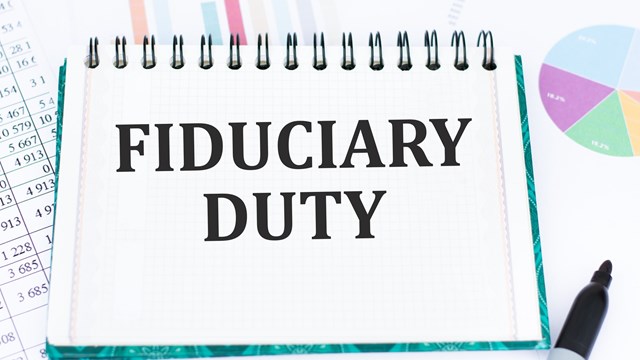Condos, co-ops and HOAs draw prospective residents with a wide variety of appealing features, from proximity to an office or family member to amazing views or the concept of having someone else mow the lawn, fix the roof, and maintain the property. For certain residents, however, the biggest appeal of co-op or condo living is the community of neighbors and various common spaces on the property.
“In a condo, you really don’t get a chance to interact with your neighbors,” says Marc Kotler, a senior vice president in the new development group at FirstService Residential, a property management company that oversees properties in more than 20 Northeast states. “These spaces build a sense of community and get them involved in the building. The apathy is huge…you can’t get people to run for a board, but if you build a sense of community, that might change.”
Popular Spaces
Looking back, Kotler has been in the multifamily industry since 1987, and understands how common spaces have changed over time. “Back then, common spaces were only about laundry rooms and larger storage spaces,” he says. “Today, buildings have common areas that are for grilling, golf simulators, dog wash areas, and wine cellars. Now, they really are demographic and user-specific areas.”
“The condos we’ve managed that have had common area, some of them have been incorporated within the building,” says Alison Field, community association manager with Bilodeau Property Management Inc. in Providence, Rhode Island. “Common rooms are used mostly for board meetings. Some of the communities will have a goal of rehabbing them into better social spaces, depending on the money available, to possibly a gym or a place for special events like a birthday party.”
“Many townhouse communities have separate clubhouses. Cardio and other exercise equipment are always very popular,” says Deborah Jones, CMCA, PCAM, vice president of The Dartmouth Group in Bedford, Massachusetts. “The use of the rest of the space generally depends on how nicely furnished the area is. If there is nice furniture and a comfortable kitchen, many associations will host community functions. These might include gatherings for events such as the Super Bowl or Kentucky Derby. Others have card players or book clubs. If the association allows private rentals and the space is nice with a well-apportioned kitchen, owners may opt to host private events such as showers, birthday parties or family holiday dinners.”
In Kotler’s experience, these spaces are popular among residents. “Especially in one building—where the units are typically smaller spaces—the residents will use the common areas as a form of a living room,” Kotler says. “There are long conference tables in the rooms, and the residents will bring their laptops and work from there. You’ll also see a population of children watching television with their mothers and nannies.”
However, the line “If you build it, they will come” may have worked for Kevin Costner's character in the movie Field of Dreams, but it doesn’t always work for a condo or co-op. Simply having a common space for residents to use—whether it be a fancy wine cellar or a simple conference room—doesn’t automatically entice them to leave their units and gather together.
“If you are using common areas for social events, it allows residents to get to know their neighbors,” adds Field. “It’s also good for board meetings, which allows people to air out things that are going on and happening in the community, and in turn they are more likely to have a better vested interest in their community and in their neighbors.”
Technically, boards are not under any obligation to do anything special with common areas but many buildings have created screening rooms, wine storage areas, and play areas for children. Fitness centers are still popular common spaces, but now rooms are more multi-use and come with a lounge, dining room, and large screen TVs. With a little creativity, common spaces can bring residents together, but how these spaces are actually utilized depends on the individual community.
Program Planning
Kotler says the best way to generate residents’ interest in the common rooms is to simply schedule regular programming. “You can bring in a local vendor to do a wine tasting one month and then have a local restaurant do a cooking demonstration,” he says. “In most cases, these programs are free and build that sense of community.”
Field agrees with Kotler on the importance of scheduling regular programming. “Scheduling social events is an easy way to get the community together and to show off the space,” she says.
A simple Internet search can provide a lot of other programming ideas for events, from psychic readings to performances by comedians and piano recitals to book readings by professional authors. Also, there are companies—such as Well Beyond 55—that can assist the board in providing unique programming to the residents. The company provides free guest lectures on health and legal topics but are not allowed to solicit residents.
Keeping up with the Joneses (or, in this case, where the Joneses live)¸ isn’t just about showing off the building’s latest—and maybe greatest—common spaces to the residents, hoping they will come and use it to meet their neighbors. In fact, the common spaces can actually improve a building’s bottom line.
While many programs are free, other programs require admission fees, which can generate revenue. Also, a successful common area often gets residents talking about how much they enjoy the building. Word-of-mouth generates interest from other potential buyers who want to enjoy the same amenities.
If boards want residents to use a space, the members may have to consider a remodel if the current space leaves a little more to be desired. A few years ago, The Solomon Organization, LLC—a manager of more than 10,000 properties in New York, New Jersey, Pennsylvania and Connecticut—converted one of the common spaces in a Lancaster, Pennsylvania property from an underutilized and outdated clubhouse into the social center of the community. They renovated the property to include a fitness center, game room, media room with HDTV’s and WiFi access for all tenants and a lounge area with a kitchen that could be rented out for parties by residents.
“If a common room is to be used for social gatherings, there should be comfortable furniture,” says Jones. “A large television with cable is important for Super Bowl or movie viewing nights. WiFi is a great amenity. Some associations have put in terminals for owners without computers to access the association management website to access information or submit maintenance requests.”
Actually, not every building needs a separate common space to create a strong sense of community. “At one building I know that was built 15 years ago…it doesn’t have any designed common spaces for residents to throw parties or gather for events, but that doesn’t stop them from making fun things happen,” says Kotler. “Every year they use the lobby to host a Halloween party. It’s the event that is most looked forward to by everyone, all year long, and it’s the one time a year where residents get together on a social basis and meet.”
“I have one association that uses one owner’s unit for parties and other events because it has a lot of space in it,” says Field. “They’ve had social events in that particular unit like gatherings, get-togethers, Christmas parties and a Welcome Wagon-type thing when there is a new owner.”
Even buildings with the biggest, flashiest, and fanciest common rooms and programming sometimes struggle with getting residents away from their computers, televisions, and couches. While it’s not required, a building with a sense of community can turn a simple building into a home where residents tell others how much they love living there.
Lisa Iannucci is a freelance writer and a frequent contributor to New England Condominium. Staff writer Christy Smith-Sloman also contributed to this article.







Leave a Comment